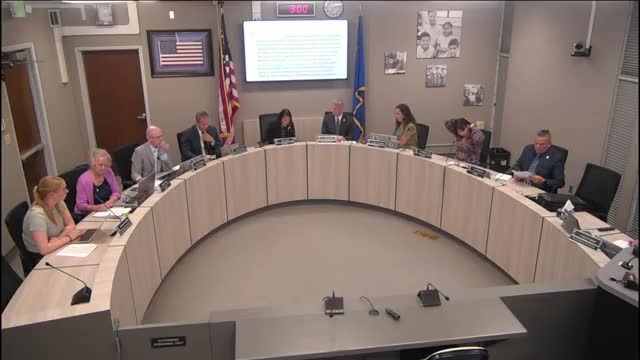Washoe County School District Approves Revamped Student Behavior Manual for 2025-26
September 24, 2025 | WASHOE COUNTY SCHOOL DISTRICT, School Districts, Nevada
This article was created by AI summarizing key points discussed. AI makes mistakes, so for full details and context, please refer to the video of the full meeting. Please report any errors so we can fix them. Report an error »

In a recent Washoe County School District (WCSD) Board of Trustees meeting, the focus turned to the newly approved 2025-26 Student Behavior Manual, a document that reflects significant collaboration and evolution in addressing student behavior in schools. The meeting, held on September 23, 2025, highlighted the importance of this manual, which aims to ensure compliance with Nevada's revised statutes while also celebrating the progress made in behavior management within the district.
Chief Academic Officer for Student Development, Jen Van Tress, and Area Superintendent Dr. Mike Paul presented the manual, emphasizing its development through extensive collaboration with various stakeholders, including the Washoe Education Association (WEA) and the principals' association. Dr. Paul noted that the manual underwent a thorough review process, with input gathered page by page to enhance its effectiveness and usability for school staff.
Trustee Hall, who played a pivotal role in pulling the item from the consent agenda, expressed the need for a deeper discussion on the manual, citing the ongoing national conversation about student behavior. Hall, a former classroom teacher, acknowledged the impact of student behavior on learning environments and highlighted the manual's evolution over the years. She called for recognition of the hard work that went into its creation and the improvements seen in behavior management data.
Dr. Paul echoed Hall's sentiments, praising the collaborative efforts that led to the manual's revisions. He explained that one of the key changes was the separation of the manual into two documents: one for quick reference by school staff and another that provides foundational context. This change was made to ensure that educators have easy access to essential information while retaining the comprehensive details necessary for understanding the underlying principles of behavior management.
The meeting also served as a reminder of the district's commitment to continuous improvement and collaboration with educators. Dr. Paul reflected on the history of the behavior manual, noting that its development began with a call for change from teachers and principals. He expressed pride in the leadership shown by the district and the valuable input from associations, which have been instrumental in shaping policies that directly affect students and staff.
As the meeting concluded, the board members and attendees left with a renewed sense of purpose, recognizing that the journey toward effective behavior management in schools is ongoing. The approval of the behavior manual marks a significant step forward, but it also sets the stage for continued dialogue and collaboration in the future, ensuring that the needs of students and educators remain at the forefront of the district's mission.
Chief Academic Officer for Student Development, Jen Van Tress, and Area Superintendent Dr. Mike Paul presented the manual, emphasizing its development through extensive collaboration with various stakeholders, including the Washoe Education Association (WEA) and the principals' association. Dr. Paul noted that the manual underwent a thorough review process, with input gathered page by page to enhance its effectiveness and usability for school staff.
Trustee Hall, who played a pivotal role in pulling the item from the consent agenda, expressed the need for a deeper discussion on the manual, citing the ongoing national conversation about student behavior. Hall, a former classroom teacher, acknowledged the impact of student behavior on learning environments and highlighted the manual's evolution over the years. She called for recognition of the hard work that went into its creation and the improvements seen in behavior management data.
Dr. Paul echoed Hall's sentiments, praising the collaborative efforts that led to the manual's revisions. He explained that one of the key changes was the separation of the manual into two documents: one for quick reference by school staff and another that provides foundational context. This change was made to ensure that educators have easy access to essential information while retaining the comprehensive details necessary for understanding the underlying principles of behavior management.
The meeting also served as a reminder of the district's commitment to continuous improvement and collaboration with educators. Dr. Paul reflected on the history of the behavior manual, noting that its development began with a call for change from teachers and principals. He expressed pride in the leadership shown by the district and the valuable input from associations, which have been instrumental in shaping policies that directly affect students and staff.
As the meeting concluded, the board members and attendees left with a renewed sense of purpose, recognizing that the journey toward effective behavior management in schools is ongoing. The approval of the behavior manual marks a significant step forward, but it also sets the stage for continued dialogue and collaboration in the future, ensuring that the needs of students and educators remain at the forefront of the district's mission.
View full meeting
This article is based on a recent meeting—watch the full video and explore the complete transcript for deeper insights into the discussion.
View full meeting